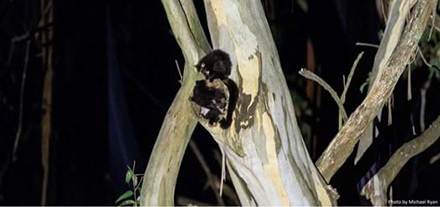The NSW Forestry Corporation will no longer be required to search for endangered greater gliders and their den trees in known habitat areas, under changes to NSW Environment Protection Authority protocols. Source: Timberbiz
Instead, loggers will be compelled to protect 14 trees with hollows in them per hectare of forest, an increase from eight under previous rules, in a change the EPA chief executive Tony Chappel said would more effectively protect the animal.
He said conducting surveys of the shy nocturnal animal in the past had proven difficult and unreliable.
“We have found these surveys to be challenging to adequately capture the location and extent of these den trees,” Mr Chappel said. “So, informed by the scientific literature on gliders, we’ve made a move through this protocol change to protecting what are called hollow bearing trees, which are the most critical element of habitat for the glider.”
Environment groups and the Greens have criticised the changes, saying they will lead to the deaths of more gliders, which were once common in Australia’s east coast forests but are now classified as endangered.
Mr Chappel said the change was a significant step-forward in the long-term protection of gliders as well as other native animals reliant on hollow-bearing trees such as possums, owls and parrots.
“This change means that instead of depending on unreliable point in time surveys to find the habitat of the gliders, we will assume the species is present and conserve their habitat,” Mr Chappel said.
“This ensures the critical habitats of some of our most endangered and much-loved native animals are protected.
“We have reviewed extensive research, sought expert views and believe this change strikes the right balance, resulting in significant ecological and regulatory improvement to the current arrangements.
“We have also consulted FCNSW to ensure any potential timber supply impacts are known and managed.
“If non-compliances with these new conditions are found, the EPA will not hesitate to take appropriate regulatory action to ensure greater gliders are being protected in forestry operations.”
The new CIFOA requirements include:
- A 50-metre exclusion zone around known recorded locations of greater glider dens.
- Protection of extra greater glider trees in addition to existing hollow bearing and giant tree requirements:
- Six trees per hectare greater than 80cm in diameter in high greater glider density areas, in addition to the eight hollow bearing trees currently required to be protected.
- Four trees per hectare greater than 50cm in diameter in lower density areas, in addition to the eight hollow bearing trees currently required to be protected.
- The retention of additional hollows and future hollow-bearing trees in areas where greater gliders are less likely to occur.
- Greater glider trees must prioritise hollows (especially ones with evidence of use) where they exist.
- Undertaking of a monitoring program to ensure the ongoing effectiveness of these new rules for greater gliders.








